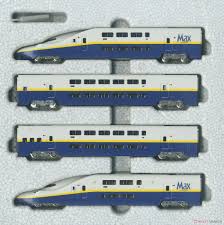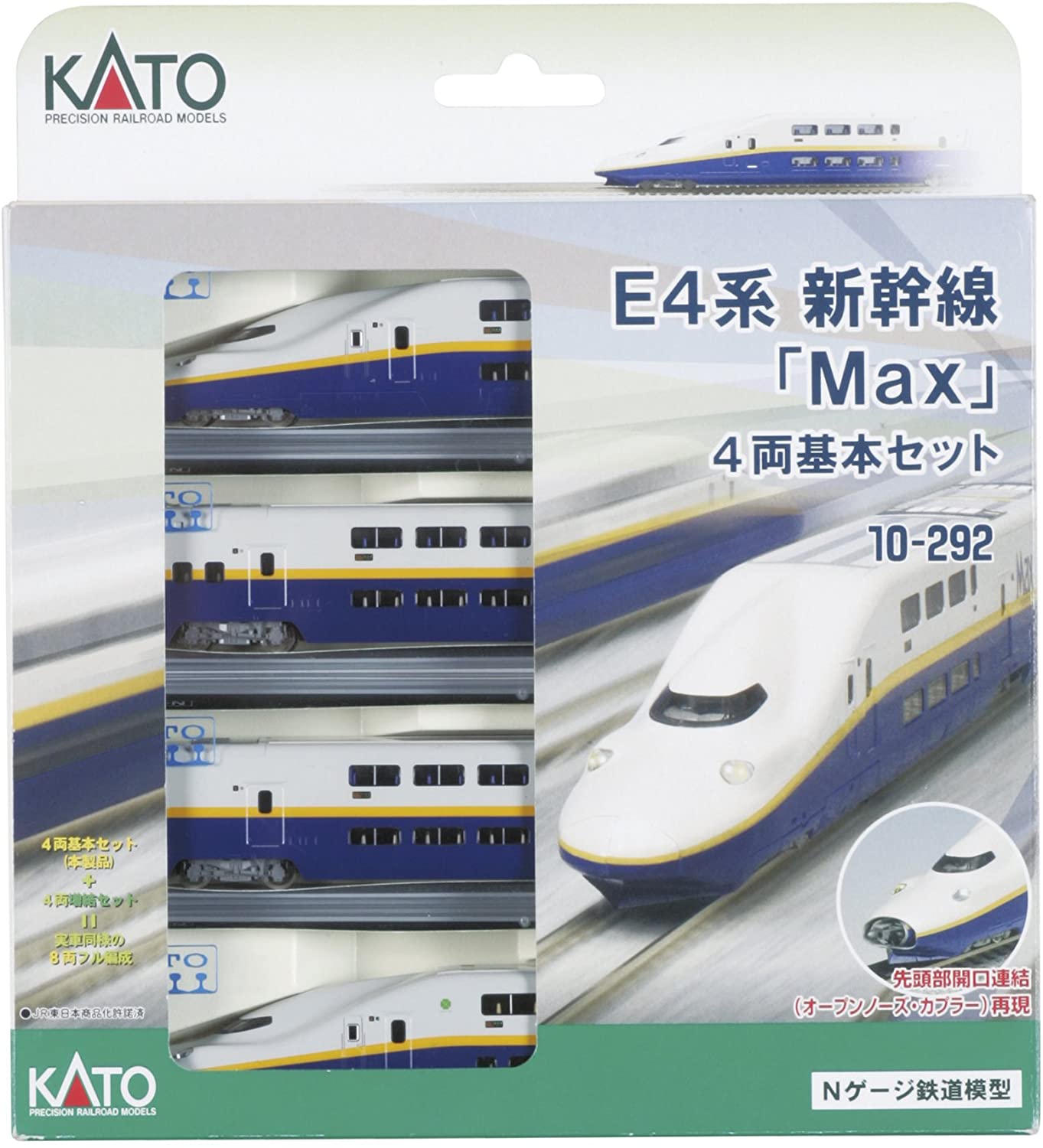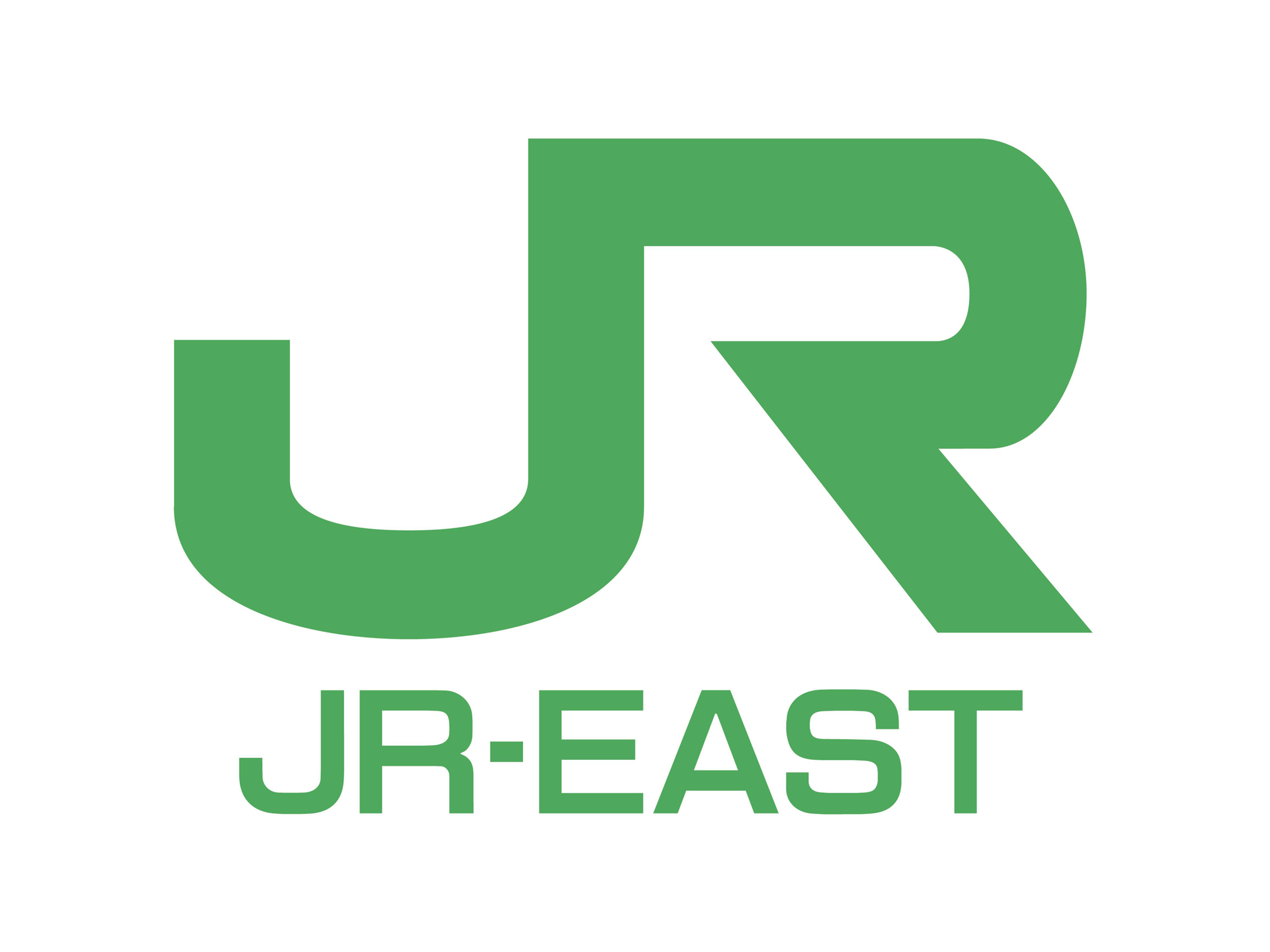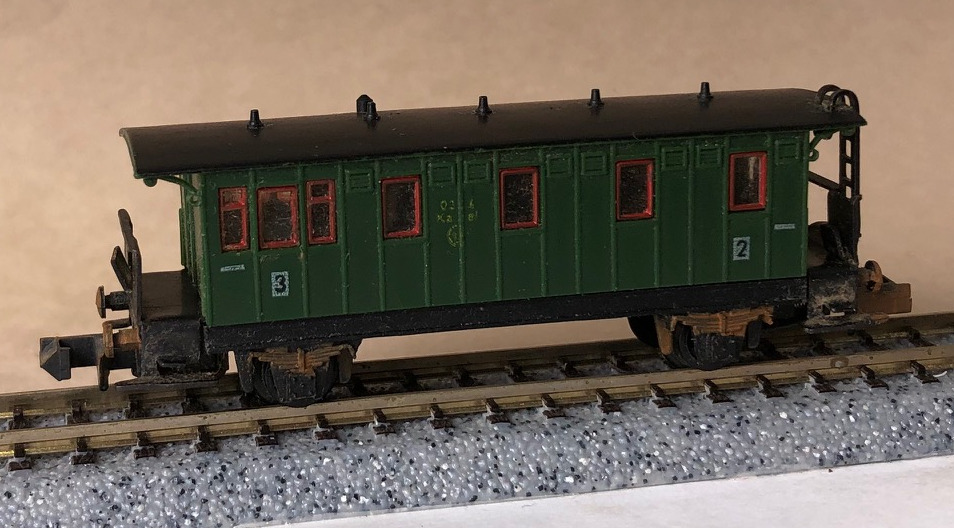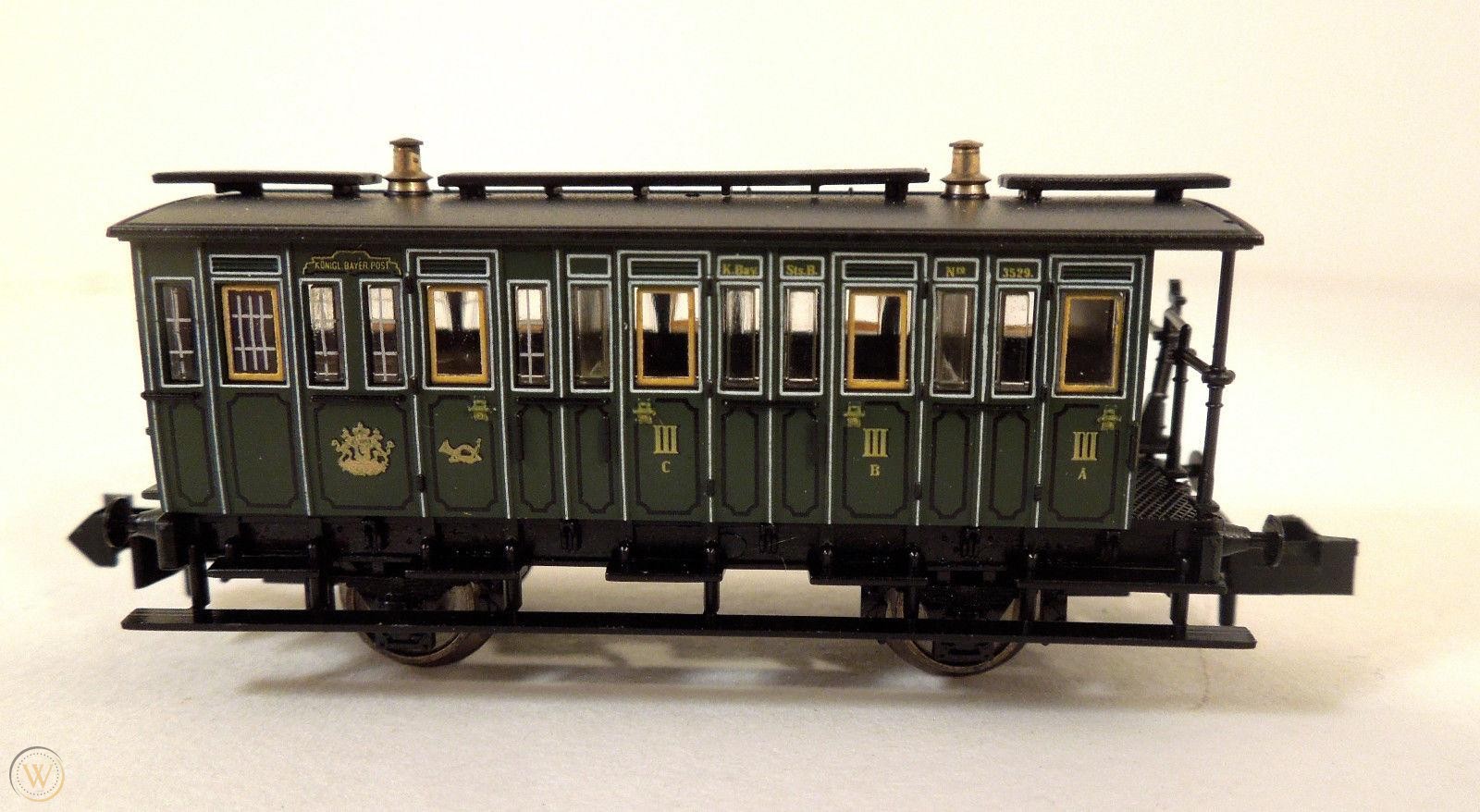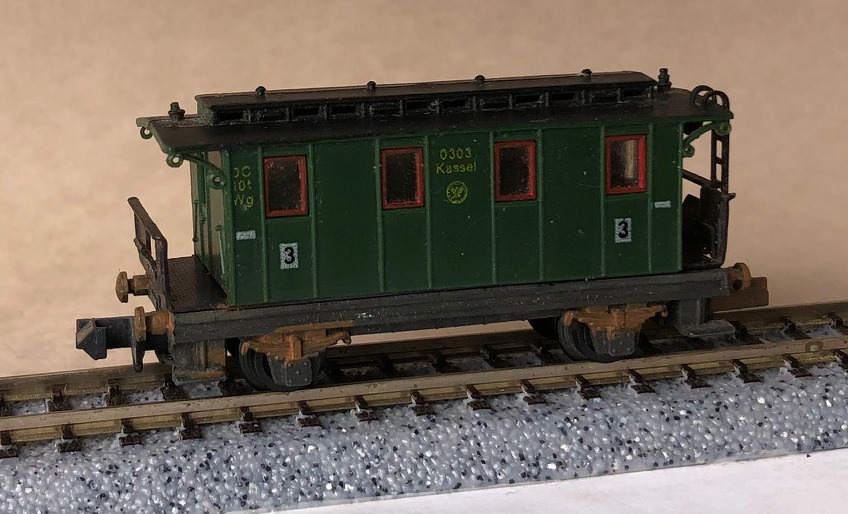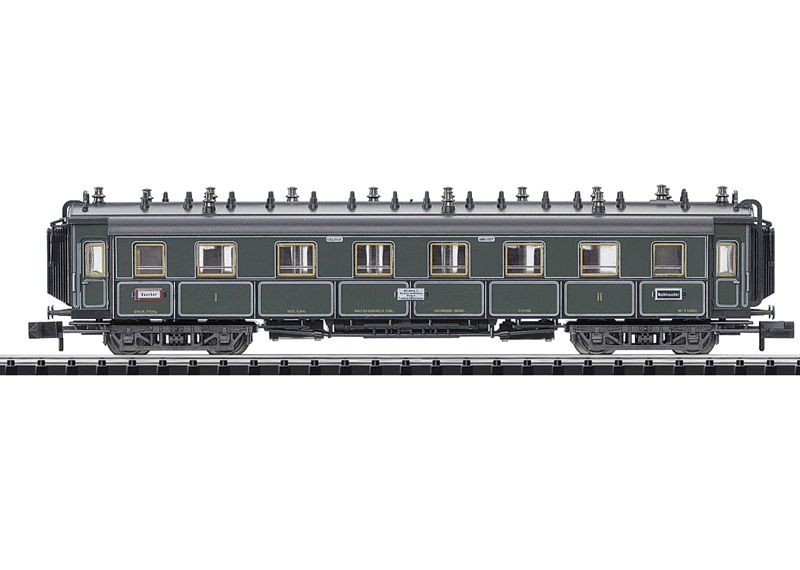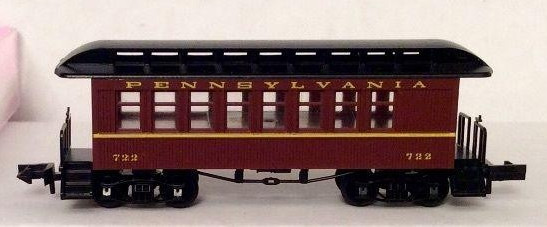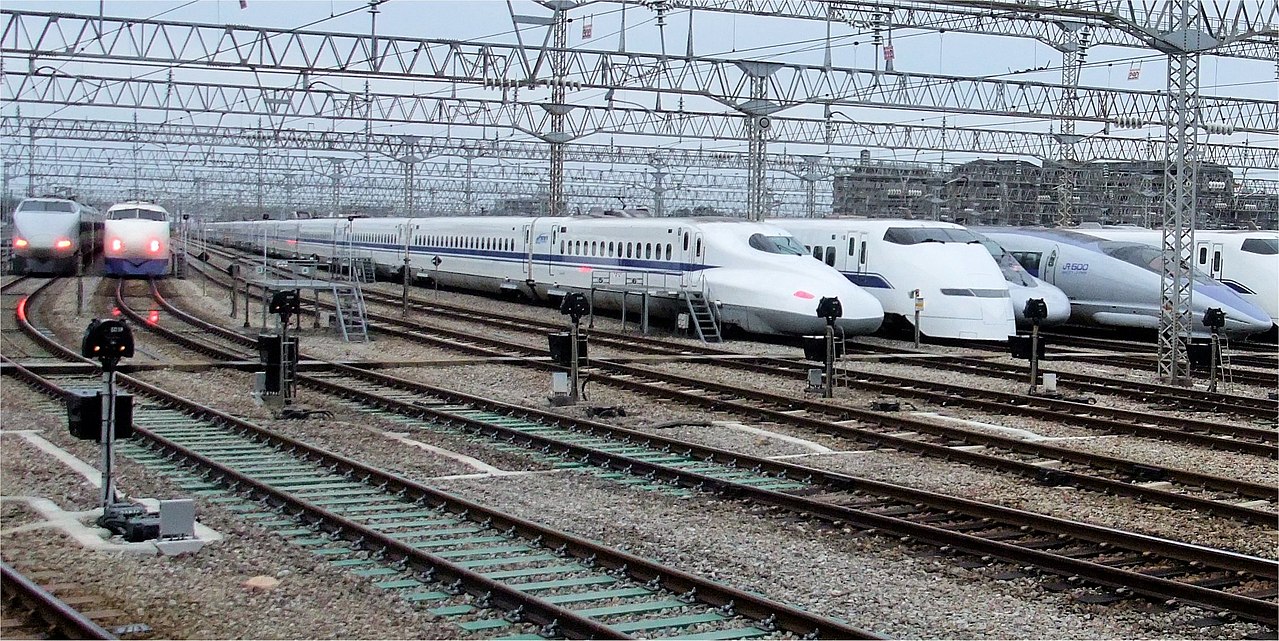Specific Item Information:
4 (four) car set with 1 (one) Motorized car, flywheel, head/tail lights (re-release)
The first E4 series set, P1, was delivered to Sendai Depot on 8 October 1997, with the first sets entering revenue-earning service on the Tohoku Shinkansen from 20 December 1997.All cars were made no-smoking from the start of the revised timetable on 18 March 2007.In March 2011, it was announced that the entire E4 series fleet would be withdrawn by around 2016.In September 2012, E4 series were entirely withdrawn from Tohoku Shinkansen services, and all allocated for use on Joetsu Shinkansen services only.
(Optional)
10-293 add-on set
11-211 LED Interior Lighting Kit, Ver.2 (DCC Optional: FR11) (1ea)
11-212 LED Interior Lighting Kit, Ver.2 (DCC Optional: FR11) (6ea)
11-213 LED Interior Lighting Kit, Ver.2 (DCC Optional: FR11) (1ea)
11-214 LED Interior Lighting Kit, Ver.2(DCC Optional: FR11) (6ea)
[ Optional Parts (For advanced users) ]
29-351 EM13 (Decoder for Motored Car) (1pc.)
29-352 FL12 (Decoder for Leader Car) (1pc.)
29-353 FR11 (Decoder for Interior Lighting) (1pc.)
4 (four) car set with 1 (one) Motorized car, flywheel, head/tail lights (re-release)
The first E4 series set, P1, was delivered to Sendai Depot on 8 October 1997, with the first sets entering revenue-earning service on the Tohoku Shinkansen from 20 December 1997.All cars were made no-smoking from the start of the revised timetable on 18 March 2007.In March 2011, it was announced that the entire E4 series fleet would be withdrawn by around 2016.In September 2012, E4 series were entirely withdrawn from Tohoku Shinkansen services, and all allocated for use on Joetsu Shinkansen services only.
(Optional)
10-293 add-on set
11-211 LED Interior Lighting Kit, Ver.2 (DCC Optional: FR11) (1ea)
11-212 LED Interior Lighting Kit, Ver.2 (DCC Optional: FR11) (6ea)
11-213 LED Interior Lighting Kit, Ver.2 (DCC Optional: FR11) (1ea)
11-214 LED Interior Lighting Kit, Ver.2(DCC Optional: FR11) (6ea)
[ Optional Parts (For advanced users) ]
29-351 EM13 (Decoder for Motored Car) (1pc.)
29-352 FL12 (Decoder for Leader Car) (1pc.)
29-353 FR11 (Decoder for Interior Lighting) (1pc.)
Prototype History: The Shinkansen (Japanese: 新幹線, pronounced [ɕĩŋkã̠ɰ̃sẽ̞ɴ]), colloquially known in English as the bullet train, is a network of high-speed railway lines in Japan. Initially built to connect distant Japanese regions with Tokyo, the capital, in order to aid economic growth and development, beyond long-distance travel it is now also used as a commuter rail network. It is operated by five Japan Railways Group companies.
Starting with the Tōkaidō Shinkansen (615.4 km, 382.4 mi) in 1964, the network has expanded to currently consist of 2,764.6 km (1,717.8 mi) of lines with maximum speeds of 240–320 km/h (150–200 mph), 283.5 km (176.2 mi) of Mini-Shinkansen lines with a maximum speed of 130 km/h (80 mph), and 10.3 km (6.4 mi) of spur lines with Shinkansen services.[4] The network presently links most major cities on the islands of Honshu and Kyushu, and Hakodate on northern island of Hokkaido, with an extension to Sapporo under construction and scheduled to commence in March 2031. The maximum operating speed is 320 km/h (200 mph) (on a 387.5 km section of the Tōhoku Shinkansen). Test runs have reached 443 km/h (275 mph) for conventional rail in 1996, and up to a world record 603 km/h (375 mph) for maglev trains in April 2015..
From Wikipedia
Starting with the Tōkaidō Shinkansen (615.4 km, 382.4 mi) in 1964, the network has expanded to currently consist of 2,764.6 km (1,717.8 mi) of lines with maximum speeds of 240–320 km/h (150–200 mph), 283.5 km (176.2 mi) of Mini-Shinkansen lines with a maximum speed of 130 km/h (80 mph), and 10.3 km (6.4 mi) of spur lines with Shinkansen services.[4] The network presently links most major cities on the islands of Honshu and Kyushu, and Hakodate on northern island of Hokkaido, with an extension to Sapporo under construction and scheduled to commence in March 2031. The maximum operating speed is 320 km/h (200 mph) (on a 387.5 km section of the Tōhoku Shinkansen). Test runs have reached 443 km/h (275 mph) for conventional rail in 1996, and up to a world record 603 km/h (375 mph) for maglev trains in April 2015..
From Wikipedia
Road Name History: JR East was incorporated on 1 April 1987 after being spun off from the government-run Japanese National Railways (JNR). The spin-off was nominally "privatization", as the company was actually a wholly owned subsidiary of the government-owned JNR Settlement Corporation for several years, and was not completely sold to the public until 2002.
Following the breakup, JR East ran the operations on former JNR lines in the Greater Tokyo Area, the Tohoku region, and surrounding areas. Its railway lines primarily serve Kanto and Tohoku regions, along with adjacent areas in Koshin'etsu region (Niigata, Nagano, Yamanashi) and Shizuoka prefectures.
Following the breakup, JR East ran the operations on former JNR lines in the Greater Tokyo Area, the Tohoku region, and surrounding areas. Its railway lines primarily serve Kanto and Tohoku regions, along with adjacent areas in Koshin'etsu region (Niigata, Nagano, Yamanashi) and Shizuoka prefectures.
Brand/Importer Information: Kato Precision Railroad Models (関水金属株式会社 Sekisui Kinzoku Kabushikigaisha) is a Japanese manufacturer of model railroad equipment in N and HO scales. The Tokyo-based company manufactures models based on Japanese prototypes (such as the Shinkansen bullet train) for the Japanese market, North American prototypes for the North American market and European high-speed trains for European market.
The Kato (pronounced kah-toe) model railroad companies were founded by Yuji Kato, father of current president Hiroshi Kato, of the parent company Sekisui Kinzoku Co., Ltd.
The design and distribution of models for the North American market are handled by their U.S. subsidiary, Kato USA, located in Schaumburg, Illinois.
The design of special models for the European market is handled for some of them by their partner, Lemke, whereas the general distribution of Kato products in Europe is handled by NOCH; both companies are located in Germany.
As a result, some Kato European models are sold as Kato Lemke and others as Kato (alone).
The Kato (pronounced kah-toe) model railroad companies were founded by Yuji Kato, father of current president Hiroshi Kato, of the parent company Sekisui Kinzoku Co., Ltd.
The design and distribution of models for the North American market are handled by their U.S. subsidiary, Kato USA, located in Schaumburg, Illinois.
The design of special models for the European market is handled for some of them by their partner, Lemke, whereas the general distribution of Kato products in Europe is handled by NOCH; both companies are located in Germany.
As a result, some Kato European models are sold as Kato Lemke and others as Kato (alone).
Item created by: Mokei Tetsu on 2017-09-22 07:26:34. Last edited by Alain LM on 2021-04-19 09:07:19
If you see errors or missing data in this entry, please feel free to log in and edit it. Anyone with a Gmail account can log in instantly.
If you see errors or missing data in this entry, please feel free to log in and edit it. Anyone with a Gmail account can log in instantly.


